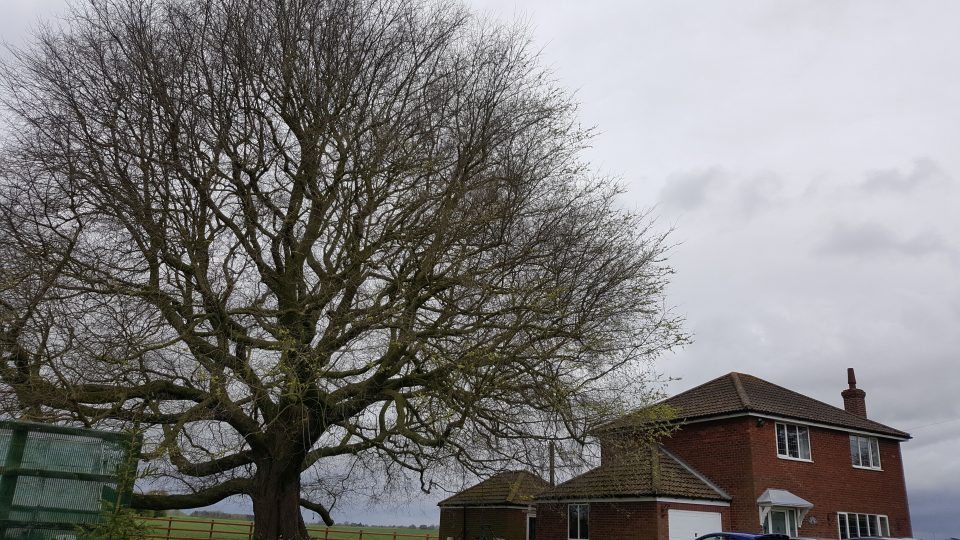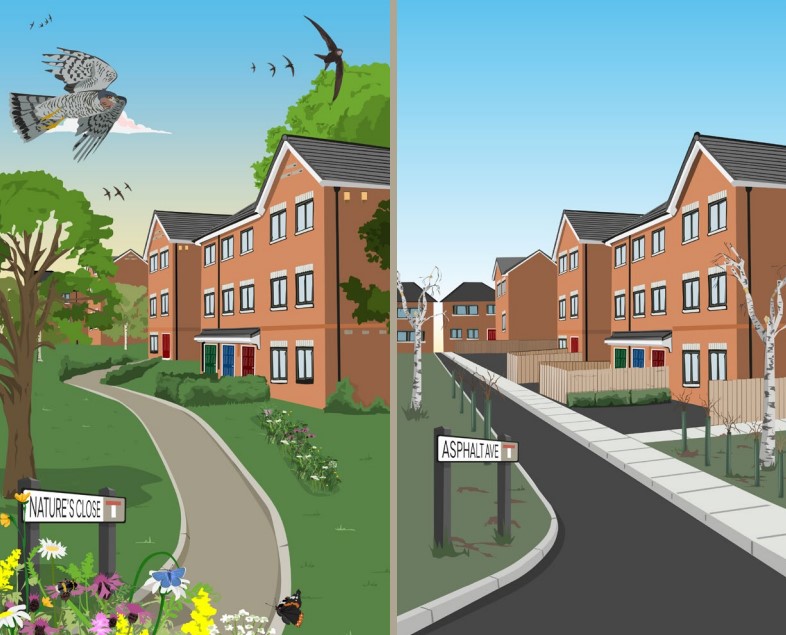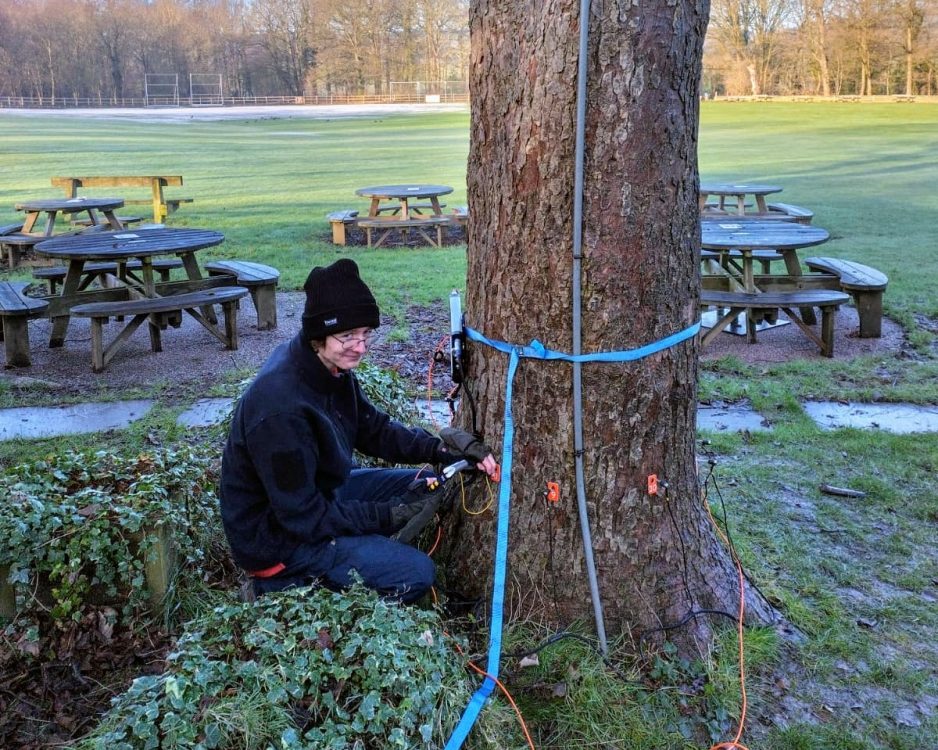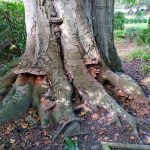
How AWA Tree Consultants’ ISO 9001 and CHAS Accreditations Ensure Quality and Safety for Your Tree Projects
25th November 2024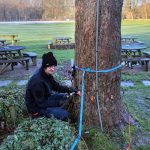
Starting My Arboriculture Apprenticeship at AWA Tree Consultants
20th January 2025Tenacious Trees: The Case for Coppicing in Urban Forestry

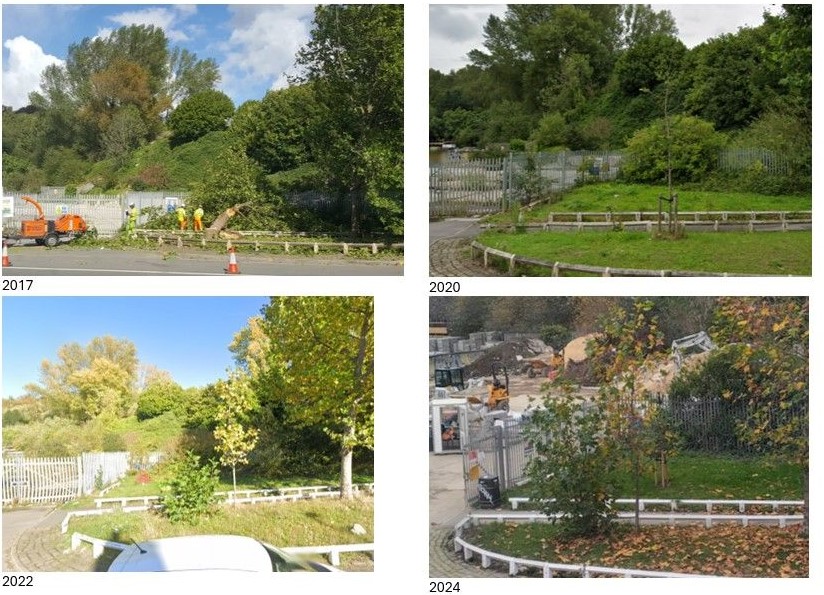
Should Tree Consultants be Recommending Coppicing?
At AWA Tree Consultants, our work as arboricultural consultants often highlight the resilience and adaptability of trees. One story unfolding outside our Sheffield office serves as a remarkable example of nature’s tenacity. This story also inspires a fresh perspective on urban tree management, challenging traditional notions of neatness in favour of traditional woodland practices like coppicing.
A Storm, a Snap, and a New Beginning
In 2017, a mature London Plane tree near our office succumbed to a storm. Due to a weak fork, the tree snapped, and for public safety, the council’s contractors were forced to fell it. While heavy reduction might have been an option (a consideration for future tree risk surveys), the decision was made to plant a replacement London Plane later that year.
It seemed the chapter had closed for the old tree, but its story was far from over.
Watching Resilience in Action
Over the following years, the stump of the felled tree began to sprout new growth. What started as small shoots transformed into a vigorous coppice, with stems that have now almost caught up to the replacement tree in height.
From our office, we’ve had the privilege of observing this regeneration, a testament to the tree’s resilience. While we watered the replacement tree during dry spells, the coppiced growth flourished independently—a powerful reminder of nature’s adaptability.
For arboriculturists and those conducting tree surveys, such regrowth challenges conventional urban forestry practices. It encourages us to rethink our approach to tree preservation, particularly in the context of urban landscapes.
The Tendency to ‘Tidy’ and Why We Should Resist
Urban tree management often prioritises tidiness and order. Features like coppiced growth, pollard stumps, or standing deadwood are sometimes removed in favour of uniform, newly planted trees, that can be accounted for on spreadsheets. However, as arboricultural consultants, we see significant value in maintaining these features. Resisting the urge to “tidy” can lead to more sustainable and ecologically diverse urban landscapes.
The Case for Coppicing in Urban Forestry
Coppicing, an ancient woodland management technique, involves cutting trees down to the base and allowing them to regenerate. While this method is traditionally associated with rural woodland settings, it offers clear benefits for urban forestry.
For arboriculturists and tree consultants, recommending coppicing provides:
- Biodiversity Boost: Coppiced trees create habitats for birds, insects, and mammals.
- Carbon Sequestration: Regenerating stumps continue to capture carbon, supporting climate resilience.
- Cost-Effectiveness: Avoiding stump grinding and reducing replanting needs lowers costs.
- Longevity: Coppiced trees often outlive single-stemmed counterparts due to refreshed growth cycles.
- Aesthetic Appeal: Multi-stemmed regrowth adds variety and character to urban spaces.
These benefits align closely with tree surveys for planning, which often emphasize sustainability of the urban forest and minimising ecological impact.
Potential Challenges
Despite the benefits, coppicing in urban environments presents challenges. For example, species like London Plane, which aren’t traditionally coppiced, may develop structural instability if regrowth becomes too heavy. Future assessments and tree safety surveys with suitable management—such as crown reduction or re-coppicing—are essential for managing this risk.
Urban planners and arboricultural consultants must also balance public safety with ecological goals. Effective communication is key to gaining public support for unconventional practices like retaining coppiced stumps.
Embracing Wildness in Urban Landscapes
The regrowth of the London Plane outside our office illustrates that trees are dynamic organisms capable of extraordinary resilience. For arboriculturists conducting BS5837 tree surveys, this serves as a reminder to look beyond traditional remove-and replace initiatives.
By capitalising on the resilience of existing roots and stumps, we can reduce costs, enhance biodiversity, and create sustainable urban forests. Moving toward this approach could transform the way we think about urban tree management.
At AWA Tree Consultants, we’re committed to exploring innovative solutions to support urban forestry. Contact us for expert advice on BS5837 tree surveys, tree risk surveys and sustainable tree management strategies.


